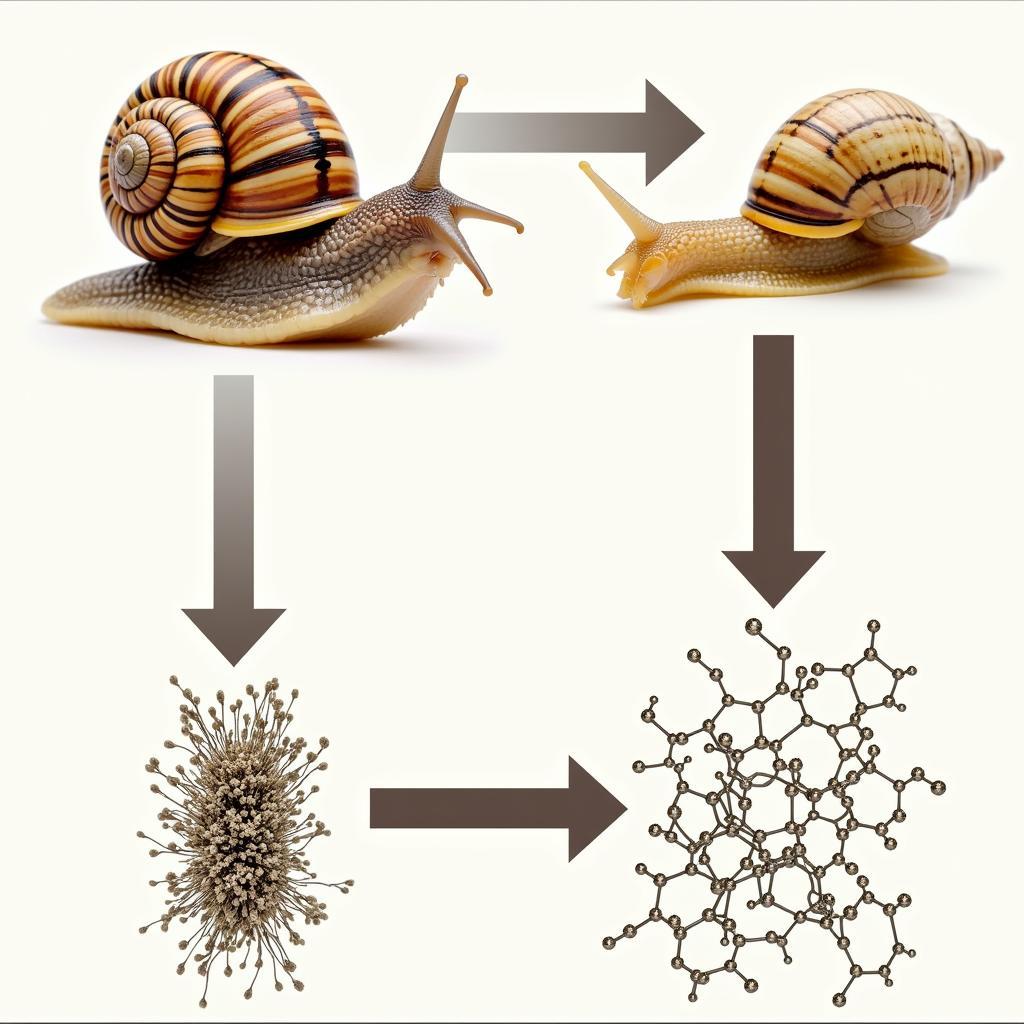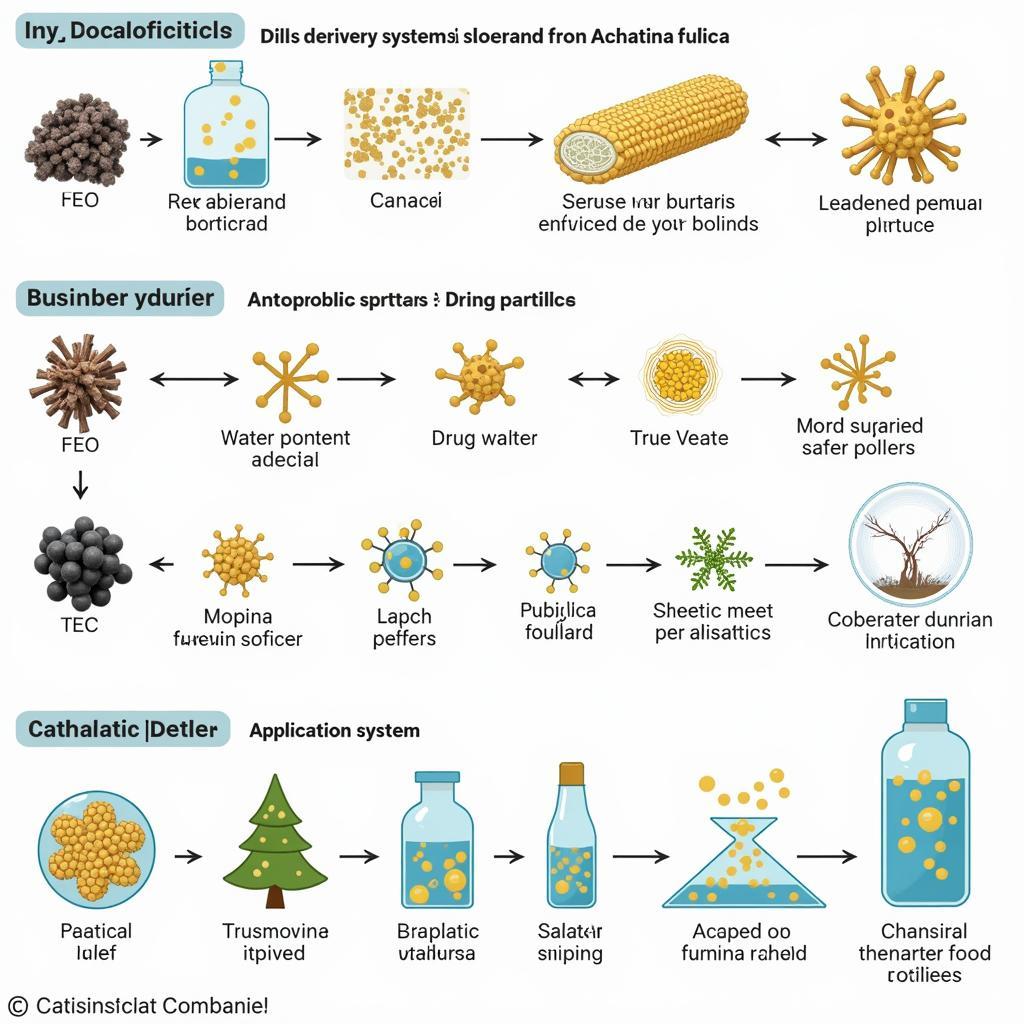Achatina Fulica Nanoparticle Synthesis and Characterization of African Snail
Achatina fulica nanoparticle synthesis and characterization of the African snail has emerged as a fascinating area of research. This field explores the potential of these land snails to produce nanoparticles with unique properties, opening up exciting possibilities in various applications. From biomedical applications to environmental remediation, the potential of these bio-synthesized nanoparticles is vast.
Exploring the Potential of Achatina Fulica in Nanoparticle Synthesis
The Giant African land snail, Achatina fulica, is more than just a garden pest; it’s a potential bio-factory for nanoparticles. Researchers are increasingly investigating the ability of this snail to synthesize nanoparticles from various metal precursors. This environmentally friendly approach, known as green synthesis, offers several advantages over traditional chemical methods, including reduced toxicity and cost-effectiveness. The process typically involves extracting specific biological components from the snail, such as mucus or hemolymph, and reacting them with metal salts to produce nanoparticles.
The unique physiological characteristics of Achatina fulica contribute to its nanoparticle synthesis capabilities. Its mucus, for example, is rich in proteins and polysaccharides, which can act as reducing and capping agents in the formation of nanoparticles. These biomolecules not only facilitate the synthesis but also influence the size, shape, and stability of the resulting nanoparticles.
 Achatina fulica nanoparticle synthesis process
Achatina fulica nanoparticle synthesis process
Characterization Techniques for Achatina Fulica Nanoparticles
Once synthesized, these nanoparticles undergo rigorous characterization to determine their properties. Techniques such as UV-Vis spectroscopy, X-ray diffraction (XRD), transmission electron microscopy (TEM), and dynamic light scattering (DLS) are employed to analyze the size, shape, crystallinity, and composition of the nanoparticles. These analyses are crucial for understanding the relationship between the synthesis parameters and the resulting nanoparticle characteristics.
Understanding the characteristics of these bio-synthesized nanoparticles is essential for tailoring their applications. For instance, the size and shape of nanoparticles can significantly influence their effectiveness in drug delivery systems. Similarly, the composition and crystallinity play a vital role in catalytic applications.
“The precision of characterization techniques is paramount in unlocking the full potential of these nanoparticles,” explains Dr. Kofi Asante, a leading researcher in nanobiotechnology at the University of Ghana. “Accurate analysis provides invaluable insights into their behavior and allows us to optimize their performance for specific applications.”
Applications of Achatina Fulica Nanoparticles
The potential applications of nanoparticles derived from Achatina fulica are diverse and promising. They have shown potential in biomedical applications, such as drug delivery and cancer therapy. Their biocompatibility and ability to be functionalized with targeting ligands make them attractive candidates for targeted drug delivery systems. In addition, their unique optical properties are being explored for use in bioimaging.
Beyond biomedicine, these nanoparticles also hold promise in environmental remediation. They have demonstrated the ability to remove heavy metals and other pollutants from water, offering a sustainable solution for water purification. Furthermore, their catalytic properties are being investigated for potential applications in industrial catalysis.
“The versatility of these nanoparticles is truly remarkable,” states Dr. Amina Abubakar, a materials scientist at the University of Nairobi. “From addressing health challenges to tackling environmental pollution, they offer a wide range of potential solutions.”
 Applications of Achatina fulica nanoparticles
Applications of Achatina fulica nanoparticles
Conclusion
Achatina fulica nanoparticle synthesis and characterization of the African snail presents a promising area of research with far-reaching implications. The ability to synthesize nanoparticles using this readily available and sustainable resource opens up exciting avenues for developing innovative solutions in various fields. As research progresses, we can expect to see even more exciting developments in this field, unlocking the full potential of these bio-synthesized nanoparticles.
FAQ
- What is green synthesis of nanoparticles?
- How are nanoparticles characterized?
- What are the potential applications of Achatina fulica nanoparticles?
- What are the advantages of using Achatina fulica for nanoparticle synthesis?
- What are the challenges in this field of research?
- What are the future directions for research in this area?
- Are there any ethical considerations regarding the use of Achatina fulica in research?
Common Scenarios & Questions
Scenario: I am interested in using Achatina fulica nanoparticles for drug delivery. What are the next steps?
Questions: What specific drug are you interested in delivering? What are the desired properties of the nanoparticles for your application?
Scenario: I want to learn more about the characterization techniques used in this research.
Questions: Which specific technique are you interested in? What aspects of nanoparticle characterization are you most curious about?
Further Reading and Related Articles
- (Hypothetical link) The Role of Snail Mucus in Nanoparticle Synthesis
- (Hypothetical link) A Comparative Study of Nanoparticle Synthesis Methods
- (Hypothetical link) Advances in Nanoparticle Characterization Techniques
For assistance, please contact us at Phone: +255768904061, Email: kaka.mag@gmail.com or visit us at Mbarali DC Mawindi, Kangaga, Tanzania. We have a 24/7 customer service team.



